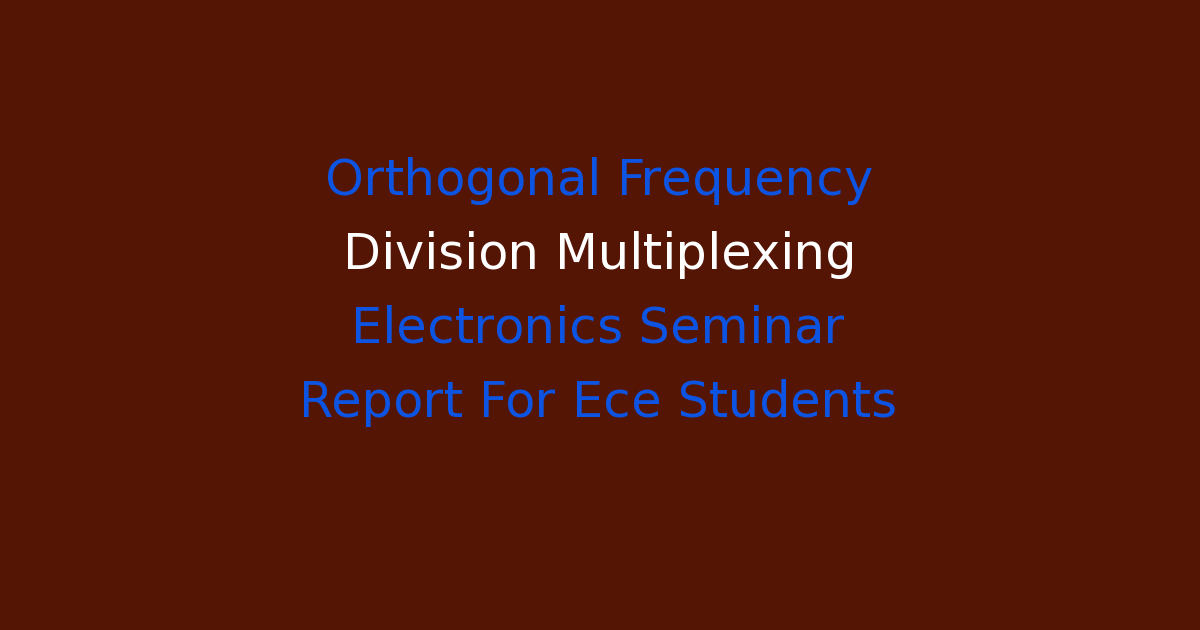Seminar report on Orthogonal Frequency Division Multiplexing (OFDM) electronics for ECE students.
Orthogonal Frequency Division Multiplexing Electronics Seminar Report for ECE Students
Introduction
Orthogonal Frequency Division Multiplexing (OFDM) is a method of encoding digital data on multiple carrier frequencies. It is widely used in wireless communication systems to efficiently transmit large amounts of data over a limited bandwidth. This seminar report explores the various aspects of OFDM technology and its applications in the field of electronics and communication engineering.
Problem Statement
Traditional communication systems suffer from several limitations such as limited bandwidth, high interference, and low spectral efficiency. These issues pose a challenge for transmitting data at high speeds over long distances. Therefore, there is a need for a more efficient and reliable communication system that can overcome these limitations.
Existing System
The existing communication systems rely on single carrier modulation techniques such as Frequency Division Multiplexing (FDM) and Time Division Multiplexing (TDM). These systems are prone to frequency-selective fading, multipath interference, and latency issues. As a result, they are not suitable for high-speed data transmission over wireless channels.
Disadvantages
The disadvantages of the existing communication systems include:
- Low spectral efficiency
- High susceptibility to interference
- Limited bandwidth utilization
- Poor performance in frequency-selective fading channels
Proposed System
The proposed system involves the use of Orthogonal Frequency Division Multiplexing (OFDM) technology. OFDM divides the available bandwidth into multiple subcarriers that are orthogonal to each other. This allows for parallel data transmission and eliminates the problem of inter-symbol interference.
Advantages
The advantages of using OFDM technology include:
- High spectral efficiency
- Improved resistance to frequency-selective fading
- Reduced inter-symbol interference
- Enhanced data transmission rates
Features
Some of the key features of OFDM technology are:
- Subcarrier orthogonality
- Parallel data transmission
- Efficient spectrum utilization
- Adaptive modulation and coding
Conclusion
In conclusion, OFDM technology offers a promising solution to the limitations of traditional communication systems. By utilizing multiple orthogonal subcarriers, OFDM enables high-speed data transmission with improved spectral efficiency and resistance to interference. ECE students can benefit from studying and implementing OFDM technology in their future projects and research endeavors.
Overall, the use of OFDM technology is expected to revolutionize the field of wireless communication and pave the way for faster, more reliable data transmission systems. By addressing the limitations of existing communication systems, OFDM technology offers a pathway towards achieving higher data rates, improved spectral efficiency, and enhanced performance in challenging wireless environments. ECE students have the opportunity to explore the potential of OFDM technology in their academic studies and contribute to advancements in the field of electronics and communication engineering.

